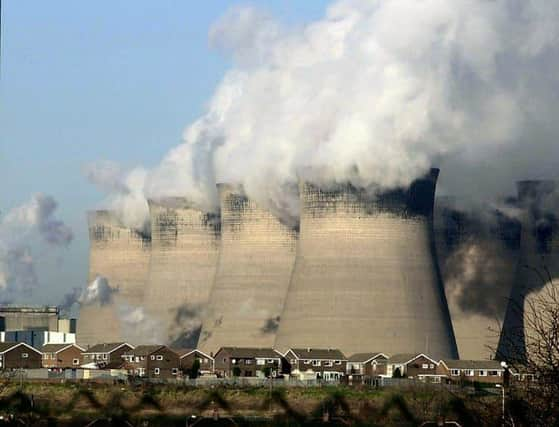East Dunbartonshire: Air pollution at lowest level in 10 years


Climate campaigners say the improvement in air quality has been helped by continuing investment in cycling and walking as well as the transition to zero-emission cars with new petrol cars to be banned from sale by 2030.
Yet there are still areas across the UK where "toxic" pollution has led to health charities calling on the Government to impose stricter limits on fine particles in the air (PM2.5), which come mainly from the burning of oil, gas and diesel.
Advertisement
Hide AdAdvertisement
Hide AdFigures from the Department for Environment Food and Rural Affairs show the average concentration of PM2.5 pollution particles in the local area was 5.8 micrograms per cubic metre in 2019 - below the UK limit of 25, and the World Health Organisation guideline limit of 10.
That was a decrease from 6 micrograms in 2018, and the lowest level since 2010, when it was 8.4.
The UK Health Alliance on Climate Change welcomed the reduction in pollution in some areas, but wants the Government to bring in lower limits on PM2.5 as part of the Environment Bill, which will come back before Parliament this year.
Dr Yannish Naik, director of the advisory group, said: “UK limits for PM2.5 pollution are still more than double the recommendations of the WHO, while air pollution contributes to around 40,000 deaths a year, with many more suffering from related diseases.”
Advertisement
Hide AdAdvertisement
Hide Ad"To save lives, protect the environment and increase our resilience to future crises we call for the Environment Bill to include a legally binding commitment to reducing PM2.5 pollution in line with WHO guidance by 2030 at the latest."
PM2.5 are tiny particles, measuring about three per cent of the diameter of a human air, which can lodge in the lungs and even pass into bloodstream, potentially causing damage to blood vessels and organs. They come mostly from traffic fumes, but also through industrial emissions, wood burners and livestock manure. A small proportion come from natural sources in the form of dust or sea salt particles.
Levels of the PM2.5 particles have fallen in Scotland since 2011 from 8 micrograms per cubic metre to 5.5 in 2019.